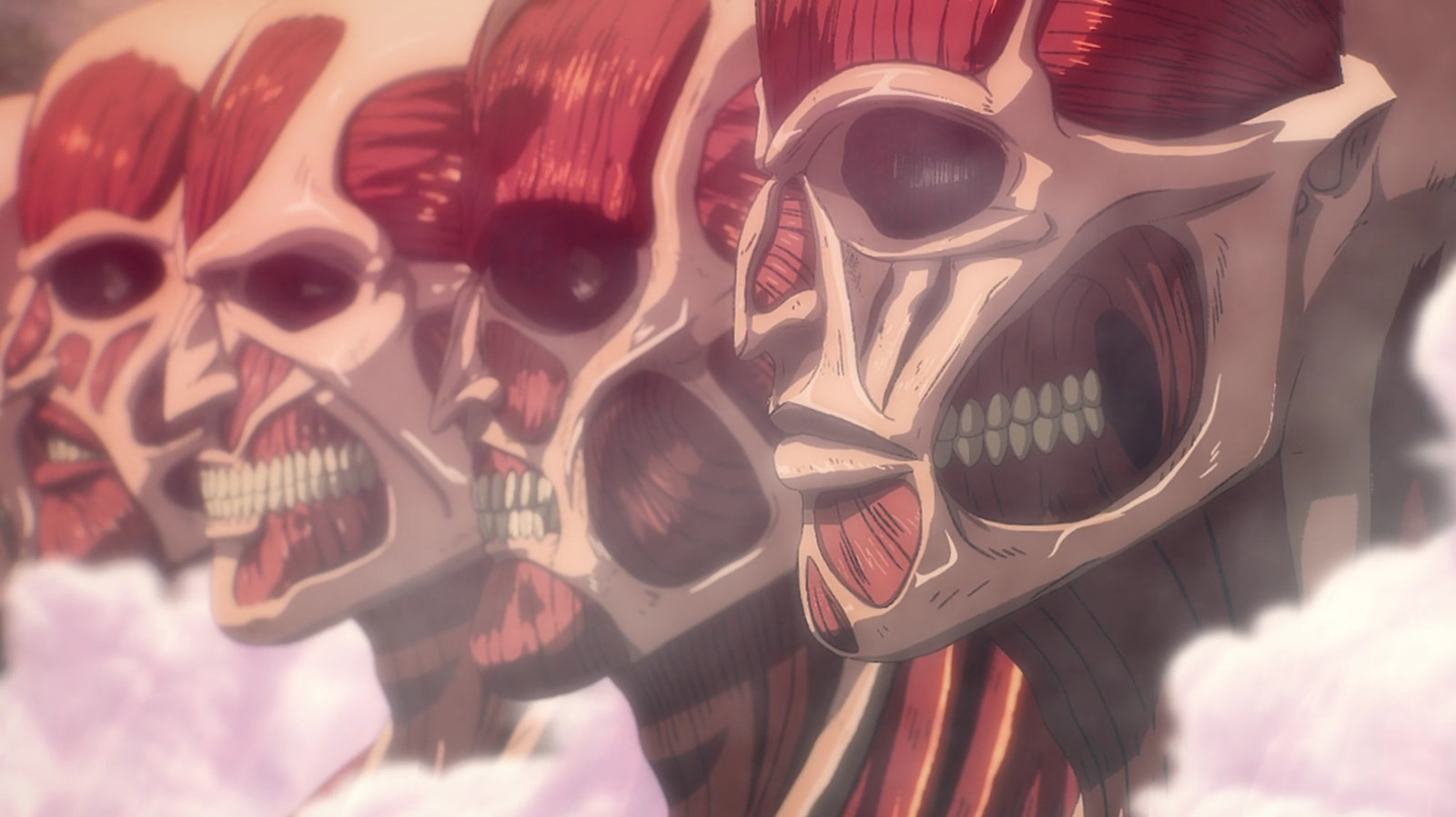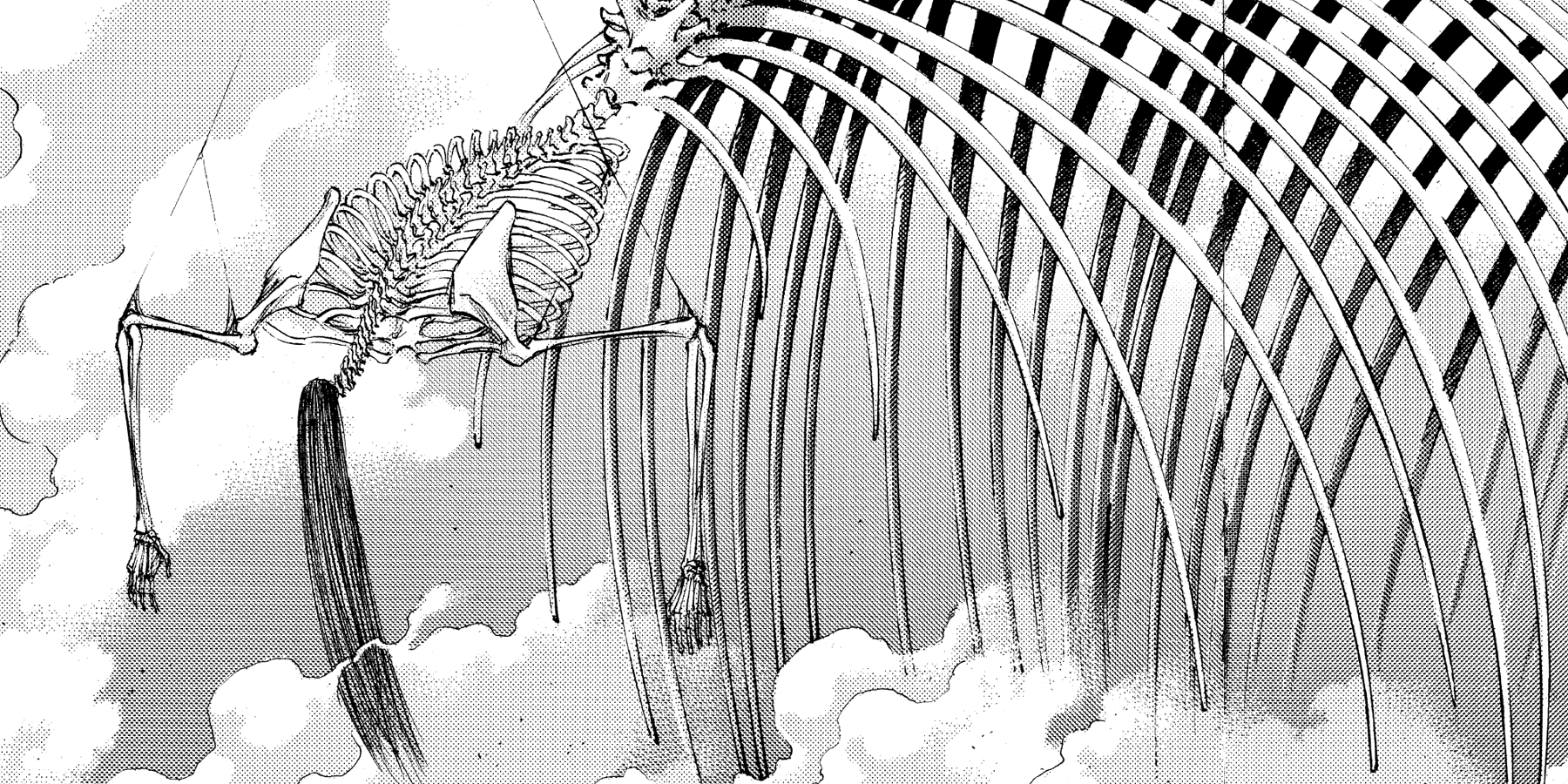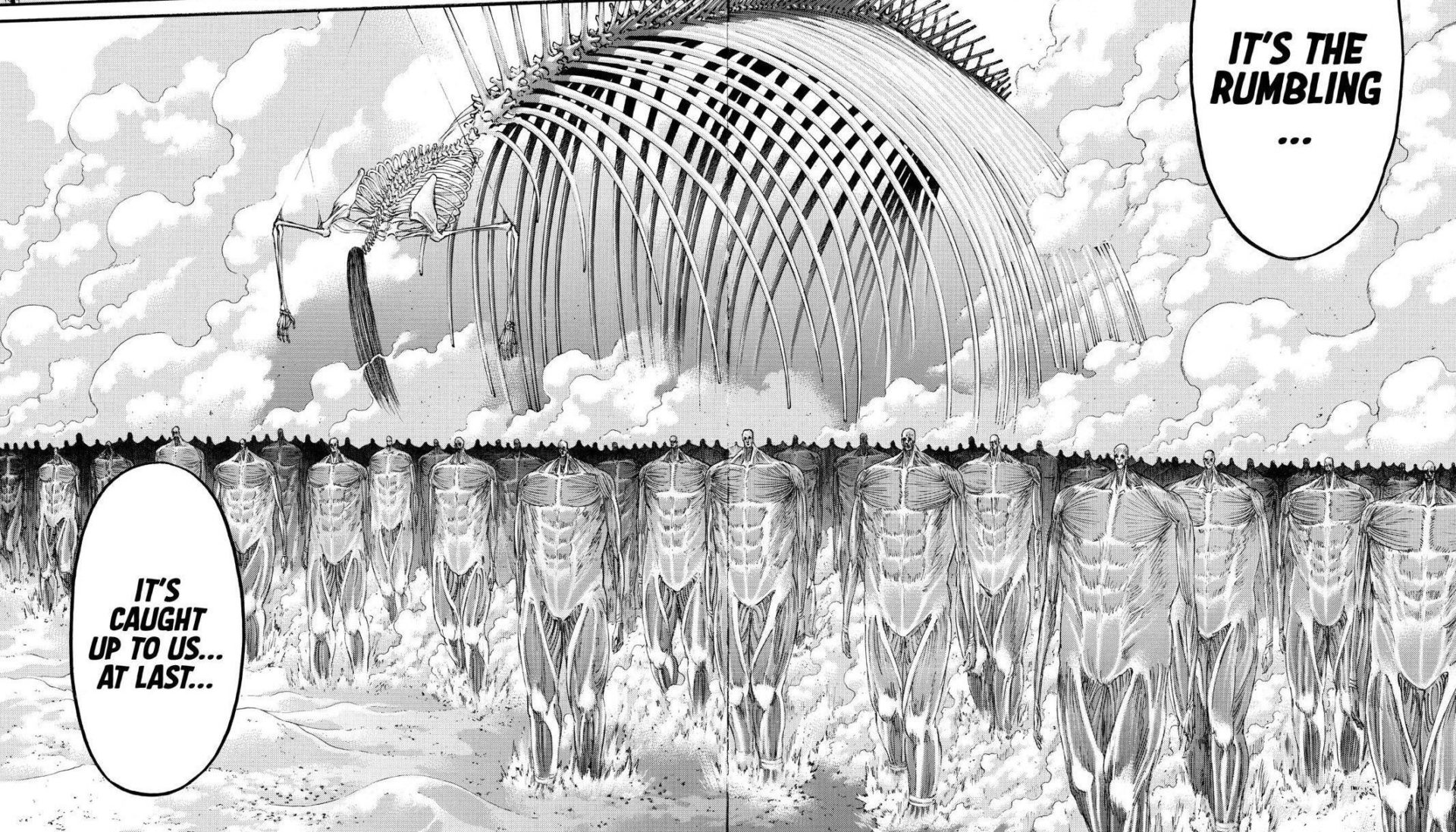The Rumbling is one of the most pivotal events in the Attack on Titan series, capturing the imagination of fans worldwide. This cataclysmic event revolves around the unleashing of colossal Titans to trample the world outside Paradis Island. As we explore the profound impact of the Rumbling, it’s essential to understand how many Titans were involved and what their roles were in this dramatic saga. Spoiler alert: it’s both fascinating and chilling!
The Concept of Titans in the Series

To fully grasp the significance of the Rumbling, we first need to dive into the concept of Titans as portrayed in the series. Titans are not just mindless giants; they come with a rich lore and complex history that vastly influence the story’s events. Here’s what you need to know:
- Origin of Titans: Titans originated from the power of the Founding Titan, a result of Ymir Fritz's actions thousands of years ago. This process eventually led to the creation of the various Titan shifters we know today.
- Types of Titans: There are several categories of Titans, including:
- Pure Titans: Mindless beings that roam the earth, typically seeking out humans.
- Shifter Titans: Humans who can transform into Titans at will. These are crucial to the storyline, including the likes of Eren Yeager.
- Abilities: Each Titan has unique abilities. For example, the Armored Titan has incredible defense, while the Attack Titan is known for its combat prowess. The Founding Titan, on the other hand, has the power to control other Titans.
The depth of Titans adds layers to the story, emphasizing themes of power, freedom, and humanity's struggle for existence. When the Rumbling is initiated, it becomes a desperate act driven by complex motivations and ideologies:
- Survival Instincts: The characters involved in the Rumbling often act out of a primal need to protect their own.
- Moral Ambiguity: The use of colossal Titans as a weapon blurs the lines between good and evil, challenging viewers to reflect on the consequences of such power.
Ultimately, Titans symbolize not just monsters but the weight of choices made by civilizations. Their involvement in the Rumbling serves as a dire reminder of the lengths to which some will go to achieve what they believe is necessary for survival. As we continue exploring the impact of the Rumbling, it’s crucial to keep in mind the multi-faceted nature of Titans, as they represent both destruction and the tragic burden of legacy.
Also Read This: Can You Feel the Rumble? Exploring the Science Behind the Phenomenon
3. How Many Titans Participated in the Rumbling

The Rumbling, a pivotal event in the world of Attack on Titan, was a massive calamity triggered by the power of the Founding Titan. But just how many Titans participated in this catastrophic event? Well, the count can be a bit nuanced given the narratives and events unfolding in the story.
To break it down, the Rumbling was primarily orchestrated by *Eren Yeager, who used the Founding Titan’s power to awaken countless Colossal Titans that were hidden within the walls. These Titans were initially dormant, but once activated, they represented a formidable force that surged across the landscape, seemingly unstoppable. Here’s what we know about the Titan numbers involved:
- Colossal Titans in the Walls: There were approximately 1,000 Colossal Titans that were awakened during the Rumbling. Each of these Titans could cause massive destruction simply by walking, given their enormous size and strength.
- The Founding Titan: At the core of this event was Eren’s Founding Titan, who facilitated the awakening of the wall Titans. His ability to communicate with the Colossal Titans was key to the entire operation.
- Other Titans: While the Colossal Titans played the most significant role, there were also other Titan shifters involved, particularly Reiner Braun (the Armored Titan), who despite his complicated loyalty, was part of the massive war that surrounded the Rumbling saga.
In total, while there were technically only around a thousand Titans involved physically, the threat they posed was amplified by Eren's strategic use of their collective might. The stakes of the Rumbling were incredibly high, showcasing the devastating capabilities of these Titans and the sheer weight of Eren's decision to execute such a drastic plan. It’s a brilliant narrative twist that highlights the complex interplay of power, morality, and survival in the world of Attack on Titan.
Also Read This: How Much Does My Hero Ultra Rumble Cost to Play and Access?
4. The Role of Each Titan in the Rumbling

Now that we have an understanding of the number of Titans that participated in the Rumbling, let's dive into the specific roles each Titan played during the calamity. This part is equally thrilling and tragic, as each Titan had a part in the destruction that unfolded.
| Titan | Role in the Rumbling |
|---|---|
| Founding Titan (Eren Yeager) | As the orchestrator of the Rumbling, Eren commanded all the Titans and directed their march across the world, signifying a radical shift in his character from a heroic figure to a complex antagonist. |
| Colossal Titans | These Titans, once dormant in the walls, became the harbingers of destruction as they advanced across the landscape, obliterating everything in their path with their colossal size and immense power. |
| Armored Titan (Reiner Braun) | Though initially an adversary, Reiner found himself torn between his duty to protect humanity and the devastating actions of Eren. He engaged in critical battles during the conflict surrounding the Rumbling. |
| The Jaw Titan (Falco Grice) | As a Titan shifter with incredible speed and agility, Falco played a crucial role in the fight against the Rumbling forces, showcasing the internal conflict of former allies turned enemies. |
Each Titan's involvement added layers of complexity to the Rumbling. Eren's decision to unleash the Colossal Titans wasn't taken lightly; it was a desperate measure born from his desire to protect his people, albeit through destruction. This duality of purpose—protecting one group while annihilating another—makes the events of the Rumbling resonate on multiple emotional levels.
Understanding the roles that each Titan had in the Rumbling also offers a broader perspective on the themes of identity, sacrifice, and the moral implications of power within the series. Attack on Titan deftly weaves these elements into a narrative that challenges our perceptions of heroism and villainy, ultimately leaving a lasting impact.
Also Read This: Who Started the Rumble in The Outsiders?
5. The Impact of the Rumbling on the World
The Rumbling, an event that seems to shake the very foundations of the world within the universe of Attack on Titan, had catastrophic consequences that redefined the lives of every character involved. Picture this: colossal titans marching relentlessly across the earth, their sheer size and force obliterating everything in their path. The immediate impact was devastating. Entire cities crumbled, and the landscapes that once teemed with life were transformed into barren wastelands.
Let’s break down the major impacts of the Rumbling on the world:
- Destruction of Infrastructure: As the titans moved, they shattered roads, bridges, and buildings without mercy. Entire nations were left in ruins, altering the geopolitical landscape forever.
- Population Displacement: With towns and cities destroyed, countless individuals found themselves homeless and unmoored. This mass displacement led to a refugee crisis, with survivors seeking shelter and safety.
- Environmental Catastrophe: The natural world suffered immensely. The march of the titans caused severe ecological damage, leading to the loss of habitats and wildlife. The long-term repercussions of such destruction would take generations to address.
- Societal Collapse: With the death toll rising and resources dwindling, society as a whole began to unravel. Communities that once thrived in peace turned to chaos as fear and desperation set in.
- The Rise of New Powers: In the aftermath, new factions and groups emerged from the ashes, each claiming to possess the answer to rebuilding. This led to power struggles that would further complicate the world’s recovery.
But beyond destruction, the Rumbling served as a catalyst for profound change, raising questions about morality, survival, and the costs of power. It forced humanity to confront its own destructive tendencies and reconsider what it truly means to coexist peacefully.
Also Read This: Who Won the Royal Rumble 2000? Rewinding WWE’s Memorable Moments
6. Key Themes and Messages Related to the Rumbling
The Rumbling isn’t just a plot device; it embodies numerous themes and messages that resonate deeply with the audience. Here are some of the key themes worth exploring:
- The Cycle of Violence: One of the most prominent themes is the notion that violence begets violence. The Rumbling is a desperate act by Eren Yeager, reflecting the lengths to which individuals will go when they feel threatened. It raises the question: Is this cycle ever truly breakable?
- Freedom vs. Safety: Eren’s actions sparked debate over what it means to be truly free. While he sought to liberate his people, his methods resulted in massive loss of life. This theme encourages viewers to consider the balance between freedom and the need for safety.
- Sacrifice and Consequences: The Rumbling serves as a grim reminder that every choice has consequences. Characters had to deal with the aftermath of their decisions, both on a personal level and for the world at large.
- Moral Ambiguity: The lines between hero and villain blur during the Rumbling. Eren, who was once a protagonist, becomes a figure of horror, forcing viewers to grapple with complex moral questions regarding good and evil.
- The Power of Unity and Division: The events of the Rumbling ultimately show that humanity must find a way to unite in the face of destruction rather than be divided by their differences. It’s a strong call for empathy and understanding, especially in times of crisis.
These themes challenge viewers not just to reflect on the narrative itself, but also on real-world issues of conflict, identity, and governance. The Rumbling stands as a pivotal moment in Attack on Titan*, inviting us to ponder deeply about our choices and their consequences in the complex tapestry of existence.
Conclusion: The Significance of the Rumbling and its Titans
In the vast narrative of the Rumbling, the Titans play a crucial role that transcends mere physical destruction. Four main Titans were directly involved in the Rumbling, each contributing to the monumental shift in the series' socio-political landscape:
- Colossal Titan - The sheer size and destructive power initiated the catastrophic event.
- Armored Titan - Representing resilience, it showcased the struggle between defense and aggression.
- Attack Titan - Embodying the conflicting ideologies of freedom and oppression, it fueled the emotional core of the story.
- Founding Titan - The source of all Titan powers, its will determined the fate of nations.
The significance of the Rumbling lies not only in the destruction it wrought but also in the existential questions it raises:
- Nature of Humanity - What sacrifices are justified for survival?
- Cycle of Hatred - Does the end justify the means, or perpetuate the cycle of violence?
- Power Dynamics - Can a singular force truly dictate the fate of many?
The aftermath of the Rumbling serves as a grim reminder of the consequences of unchecked power and the moral dilemmas faced by individuals in conflict. Ultimately, the involvement of these Titans not only reshaped the world but also left a profound impact on the characters and their journeys, compelling audiences to reflect on the fine line between humanity and monstrosity.
 admin
admin








